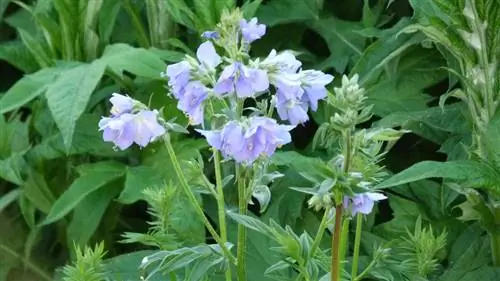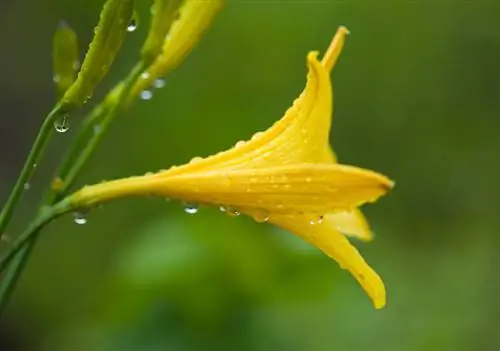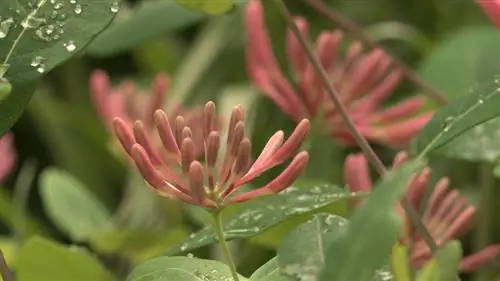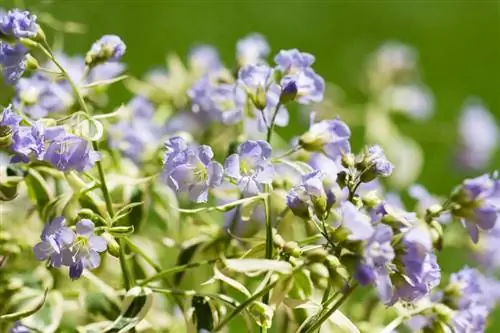- Author admin [email protected].
- Public 2023-12-16 16:46.
- Last modified 2025-01-23 11:20.
Jacob's ladder (Polemonium caeruleum), also known as the blue ladder to heaven, impresses with its blue (or white in some varieties) flowers with bright yellow stamens. The very vigorous perennial that forms groups grows up to 90 centimeters high and is one of the typical cottage garden plants. When planted in the right location, Jacob's ladders require little care.

How do you optimally care for Jacob's ladder plants?
Jacob's Ladder plants prefer sunny locations and nutrient-rich, well-drained soil. Regular watering is important, especially in summer. Fertilize with compost at the beginning of the growing season and cut out spent flower stalks to extend the flowering period. Jacob's ladders are hardy and only need winter protection in pots.
Where does Jacob's Ladder feel comfortable?
Choosing the right location is essential for plants to thrive - the robust Jacob's ladder is no exception. The perennial, up to 90 centimeters high, prefers, as in its natural habitat, a sunny place with nutrient-rich, permeable and not too dry soil.
When should you water Jacob's ladder?
Jacob's ladders require a lot of water and have difficulty coping with longer dry periods. Regular watering is therefore essential, especially in summer - especially in sunny locations. Water the plants both morning and evening if necessary, although the flowers should not be irrigated. A layer of mulch helps prevent the soil from drying out.
Do you have to fertilize Jacob's ladder? If yes, when and with what?
In terms of its nutritional requirements, Jacob's ladder is quite straightforward. It is sufficient to provide the perennial with compost at the beginning of the growing season (approx. March / April, depending on the weather). These doses can be repeated several times over the course of the summer. Jacob's ladders in planters are fertilized with liquid fertilizer (€18.00 on Amazon). Be careful not to apply fertilizer to the dry root ball.
How should you cut Jacob's ladders? When is the right time to prune?
It is advisable to regularly cut out faded flower stalks and wilted foliage; this significantly extends the flowering period of the plant. Immediately after the flowering period, a recut is made to around 10 centimeters, then the perennial often sprouts a second time. Before the winter break, another cut is carried out to just above the ground.
How to propagate Jacob's ladders?
Jacob's ladders spread very reliably through self-sowing and - in some species - also through rhizomes. Some varieties can also be propagated by division in spring.
Are Jacob's ladders hardy?
As native plants, Jacob's ladders are hardy and only require winter protection when grown in pots.
How can you optimally overwinter Jacob's ladders?
In winters with little snow, you should water Jacob's ladder on frost-free days, the plant needs a lot of moisture even in winter.
Tip
In addition to a large number of wild forms and their cultivars, there are numerous hybrids. They can vary greatly in height and flowering. “Lambrook Mauve” is a richly flowering perennial up to 50 centimeters high with lilac-colored flowers, “Pink Beauty” has pale purple-pink, bell-shaped flowers and only grows to about 30 centimeters high.






